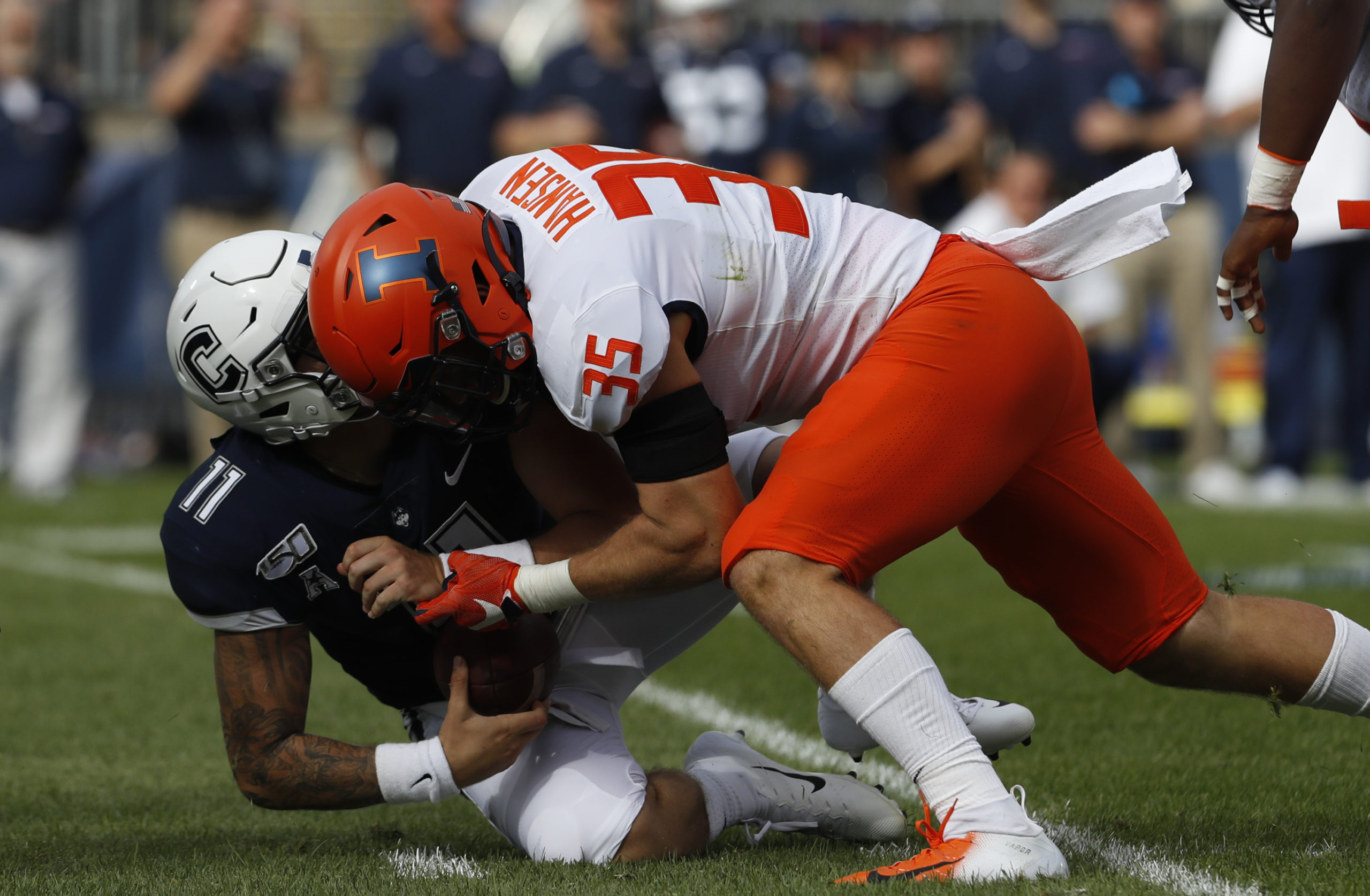Ad Disclosure

One of the toughest metrics to predict from year-to-year is takeaways. They’re a bit flukey. They’re random. In fact, Syracuse and Florida are the only teams that were in the top 20 nationally in 2018 and 2019.
So in the context of Illinois’ defense in 2020, it’s going to be very difficult to replicate the 2019 unit that finished 4th in the country with 28 takeaways. The Illini love to play “Lovie Ball,” just as 5th-year head coach Lovie Smith’s best teams with the Chicago Bears did, too. The Illini, in fact, still play the famed “Tampa 2” popularized by Tony Dungy and Smith.
Illinois led the Big Ten in takeaways and in turnover margin, doing a better job than an Ohio State team that had 2 top-3 picks on defense and a Heisman finalist at quarterback. So yeah, Illinois seemed to do as well as it possibly could have in that regard.
So can Illinois improve upon its No. 77 national ranking in total defense? There are holes in some key areas, plus a few potential breakout stars.
Pressuring the QB: Worse
Illinois was 10th in the B1G with 25 sacks a year ago. It’s hard to see where improvement will come from. The Illini lost sack leader Oluwole Betiku (9.0) from an already sub-par pass rush attack.
Milo Eifler, a former 4-star recruit and transfer from Washington, can be a big hitter and has shown some ability to get to the quarterback with 2 sacks and 10 tackles for loss. It’s probably a lot to ask of Jake Hansen to up his pass-rushing from his middle linebacker position, but he might have to.
Run defense: Worse
Illinois could not stop the run in 2019. The numbers were bad (195.5 rushing yards per game allowed, 13th in the B1G and 103rd in the country), but a closer look reveals that it could have been worse. Illinois only allowed 74 rushing yards total in its first 2 games against Akron and UConn, but the wheels came off in conference play.
Nebraska, Minnesota and Michigan had at least 295 rushing yards to open Big Ten play and averaged 5.9 yards per carry or better against the Illini. Later in the season, Northwestern — which essentially operated without a passing attack in 2019 — racked up 378 yards on the ground.
Then when you consider that Illinois is losing Dele Harding (153 tackles, 14 tackles for loss), Ayo Shogbonyo (9.5 TFL) and Jamal Milan (8.5 TFL), you wonder how it’s going to get any better. A lot of things have to go right on the line, like Isaiah Gay and Jamal Woods staying healthy. Calvin Avery is the big question mark. The former 4-star recruit has his chance at nose tackle.
Illinois might need Hansen to force double-digit fumbles. It’s not totally out of reach. He led the country last year with 7 forced fumbles.
Pass defense: Better
Fourth-year starter Nate Hobbs is back at one corner spot and converted safety Tony Adams likely will start. Hobbs might be Illinois’ best defensive player. And Adams has a knack for the big play as his interception against Wisconsin set up the game-winning field goal. He also had a pick-6 against Purdue.
But the real optimism for Illinois to improve in this area is because of Marquez Beason, a former top-100 prospect who is the highest-ranked recruit to sign with Illinois under Smith. Beason flashed some of his ability in preseason practice last season as a true freshman, but he tore his ACL and missed the entire season. If he can stay healthy and work his way into the rotation, which seems like a strong possibility, he will give the Illinois secondary a different kind of athleticism.
Louisville transfer TreSean Smith will also likely start at safety and give this defense a boost alongside All-Big Ten safety Sydney Brown.
A unit that was already pretty good (212.9 passing yards per game, 45th nationally) should be even better in 2020. One goal: Trim the number of TD passes allowed. The Illini gave up 21 last year. Only 3 B1G teams allowed more.
Overall: Worse
My question is what happens if Illinois doesn’t force quite as many turnovers in 2020? They picked off 12 passes last season, tied for 3rd in the B1G. They led the B1G with 16 fumble recoveries. The Illini also allowed 408.5 yards per game in 2019, which was 11th in the Big Ten. They allowed 5.6 yards per play, which was 10th. All of a sudden, the Illini could go from allowing 26.2 points per game to into the 30s.
That said, takeaways have always been Smith’s calling card. The Bears’ best teams found a way to create turnovers and use them to score or set up red-zone opportunities. So if anyone can lead a team to the top of the turnover rankings again, it’s Smith. And if Illinois can improve slightly in those efficiency metrics, it could be back in a bowl game.
If I had to guess, though, I’d say the Illini experience some regression in the takeaway category and will need to rely on their offense to score a bit more and keep them in games.
Ryan O'Gara is the lead columnist for Saturday Tradition. Follow him on Twitter @RyanOGara.